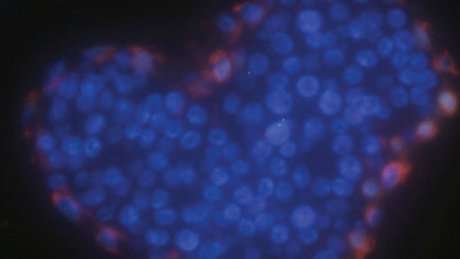Scientists develop 'world-first' 3-D mammary gland model

A team of researchers from Cardiff University and Monash Biomedicine Discovery Institute has succeeded in creating a three-dimensional mammary gland model that will pave the way for a better understanding of the mechanisms of breast cancer.
Using a cocktail of growth factors, scientists were able to grow mouse mammary cells into three-dimensional mammary tissue.
Known as an 'organoid', the model mimics the structure and function of a real mammary gland. This enables researchers to increase their understanding of how breast tissue develops, and provides an active model for the study of disease and drug screening.
As well as determining how to grow these life-like mammary glands, researchers also discovered how to maintain them in culture to allow ongoing experimentation - the first time this has been developed in a laboratory.
Professor Trevor Dale of Cardiff University School of Biosciences explains the significance of this research: "Much of how breast tissues respond to external stimuli such as hormones is, as yet, unknown. In order to fully tackle the mechanisms that lie behind breast cancer we first need to understand how healthy breast tissue develops. As such, developing a model of a normal breast with the actual architecture of a mammary gland has long been a 'Holy Grail' for cancer researchers."
Dr Thierry Jarde, from the Monash Biomedicine Discovery Institute, adds: "This model allows us to really study the basic biology of how the breast develops - how hormones work, what are the genetic influences. Further down the track we hope to use this model in tandem with models of breast cancer in order to carry out effective drug-screening."
The research 'Wnt and Neuregulin1/ErbB signalling extends 3D culture of hormone responsive mammary organoids' is published in the journal Nature Communications.
More information: Thierry Jardé et al, Wnt and Neuregulin1/ErbB signalling extends 3D culture of hormone responsive mammary organoids, Nature Communications (2016). DOI: 10.1038/ncomms13207


















